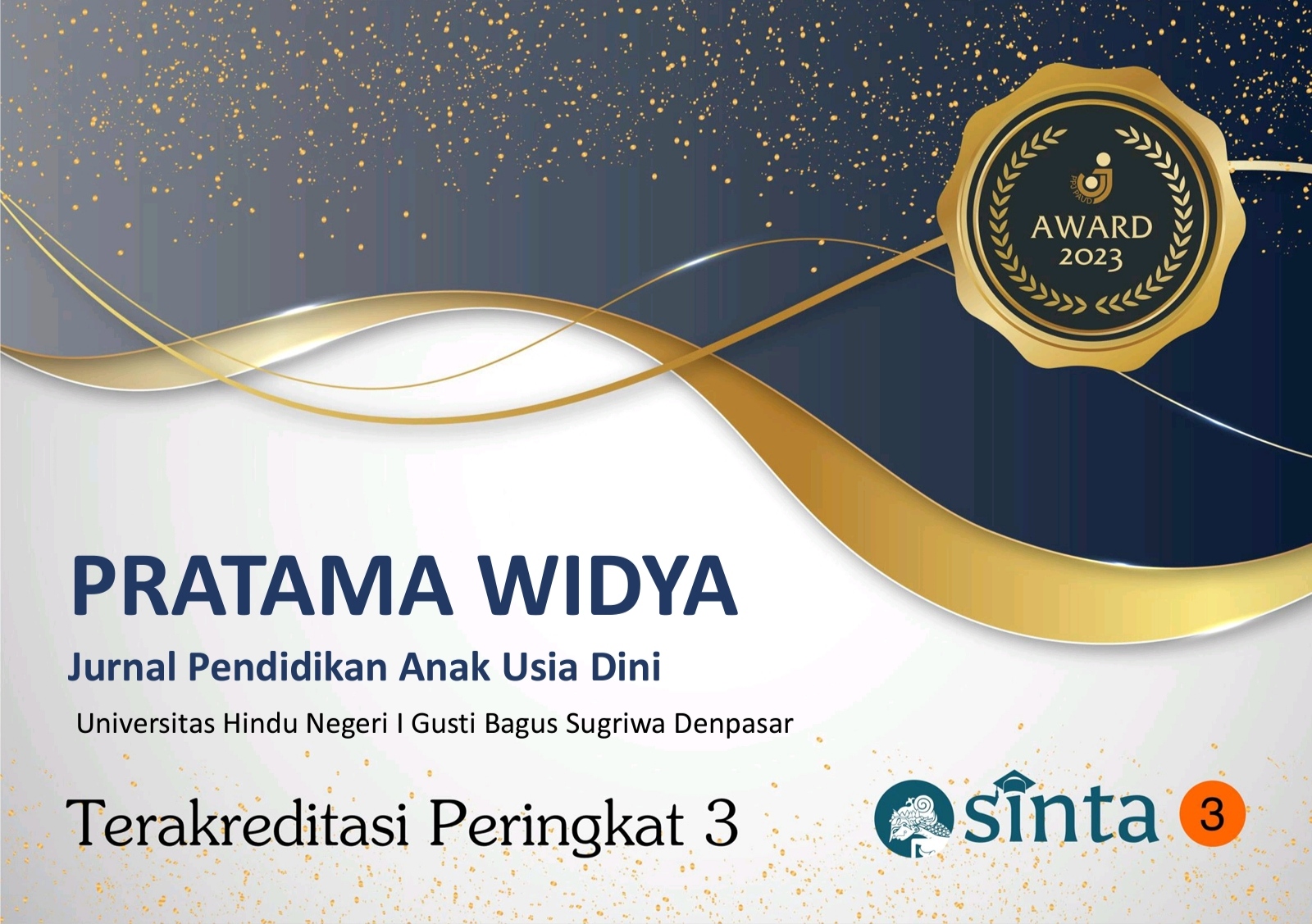Upaya Guru Dalam Meningkatkan Kreativitas Anak Usia Dini Melalui Metode Bermain Peran
DOI:
https://doi.org/10.25078/pw.v9i1.3552Kata Kunci:
Early Childhood, Role Playing, CreativityAbstrak
The aim of this research is to describe the efforts of teachers at RA Tunas Literasi Qur'ani Rejang Lebong in increasing the creativity of early childhood by using role-playing methods. Role playing is a form of game that teachers use by directly involving children in participating in playing a character. And creativity should be stimulated from an early age. With the hope that this creativity can become a provision for children in facing the next life. This research uses a qualitative descriptive method which describes the situations that occur in the role-playing learning process carried out by teachers at RA Tunas Literasi Qur'ani Rejang Lebong. Based on the research results, it can be concluded that the application of the role-playing method implemented there can stimulate the creativity of early childhood. With stages 1) The teacher prepares a previously agreed theme, 2) The teacher provides the game tools that will be used, 3) The teacher divides the roles and characters to each child, 4) The teacher invites the children to act out their respective roles accompanied by encouraging interaction. with each other, 5) the teacher makes observations and then reflects with the children.
Referensi
Aulina, CN, University, P., & Sidoarjo, M. (2014). The influence of role playing on improving the social abilities of early childhood. Trunojoyo PG-PAUD Journal , 1 (1), 2.
Hidayat, H., Nurfadilah, A., Khoerussaadah, E., & Fauziyyah, N. (2021). Increasing Teacher Creativity in Early Childhood Learning in the Digital Era. Journal of Childhood Education , 10 (2), 97–103. https://doi.org/10.21831/jpa.v10i2.37063
Imam Musbikin. (2010). PAUD Smart Book . Like.
Khusna, N., Rosyidah, SN, Rahma, T., & Aulia Dewi, LN (2022). The Value of Creativity in Early Childhood Entrepreneurship Through Cooking Day Activities at RA Roudlotusysyubban. JECER (Journal Of Early Childhood Education And Research) , 3 (2), 61. https://doi.org/10.19184/jecer.v3i2.32016
Latif, M. (2013). New Orientation for Early Childhood Education . Kencana Prenada Media Group.
Mulyati, S., & Sukmawijaya, AA (2013). Increasing Creativity in Children. Innovation And Entrepreneurship , 2 (2), 124–129.
Widyasanti, NP (2021). Strategies for Developing Early Childhood Creativity During the Pandemic. Kumarottama: Journal of Early Childhood Education , 1 (1), 74–83. https://doi.org/10.53977/kumarottama.v1i1.287
Aulina, CN, University, P., & Sidoarjo, M. (2014). The influence of role playing on improving the social abilities of early childhood. Trunojoyo PG-PAUD Journal , 1 (1), 2.
Hidayat, H., Nurfadilah, A., Khoerussaadah, E., & Fauziyyah, N. (2021). Increasing Teacher Creativity in Early Childhood Learning in the Digital Era. Journal of Childhood Education , 10 (2), 97–103. https://doi.org/10.21831/jpa.v10i2.37063
Imam Musbikin. (2010). PAUD Smart Book . Like.
Khusna, N., Rosyidah, SN, Rahma, T., & Aulia Dewi, LN (2022). The Value of Creativity in Early Childhood Entrepreneurship Through Cooking Day Activities at RA Roudlotusysyubban. JECER (Journal Of Early Childhood Education And Research) , 3 (2), 61. https://doi.org/10.19184/jecer.v3i2.32016
Latif, M. (2013). New Orientation for Early Childhood Education . Kencana Prenada Media Group.
Mulyati, S., & Sukmawijaya, AA (2013). Increasing Creativity in Children. Innovation And Entrepreneurship , 2 (2), 124–129.
Widyasanti, NP (2021). Strategies for Developing Early Childhood Creativity During the Pandemic. Kumarottama: Journal of Early Childhood Education , 1 (1), 74–83. https://doi.org/10.53977/kumarottama.v1i1.287
Unduhan
Diterbitkan
Cara Mengutip
Terbitan
Bagian
Lisensi
Hak Cipta (c) 2024 Amanah Rahma Ningtyas, HM Taufik Amrillah

Artikel ini berlisensiCreative Commons Attribution-NonCommercial-ShareAlike 4.0 International License.








